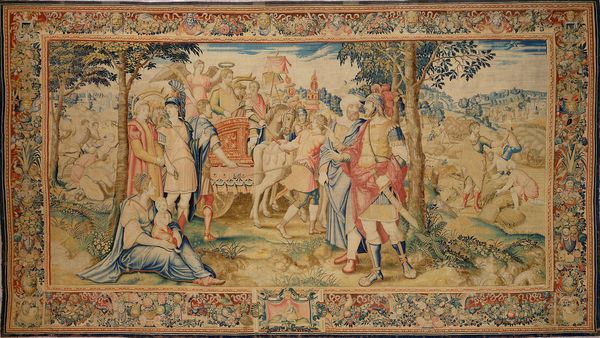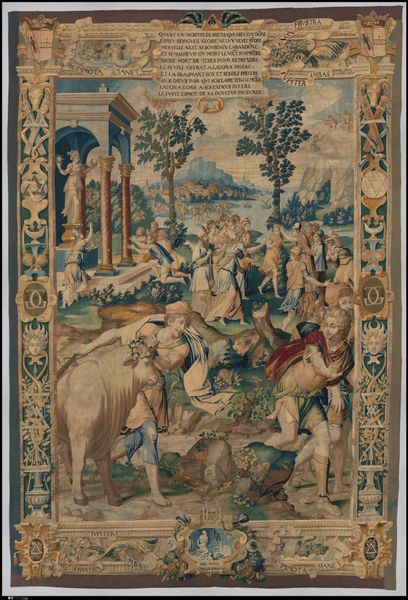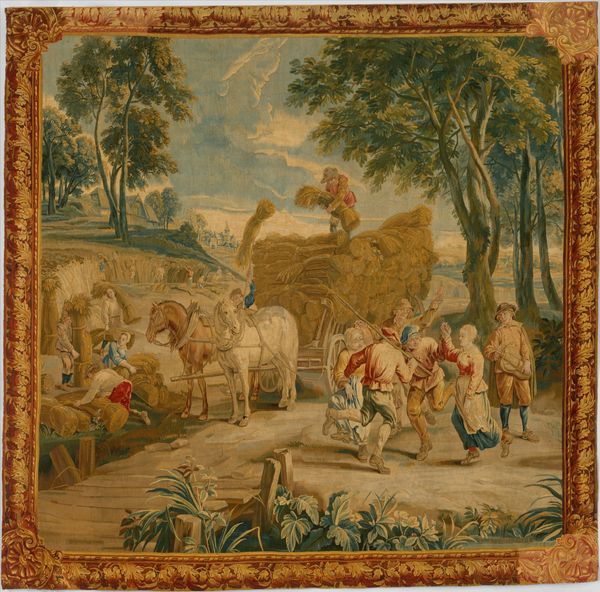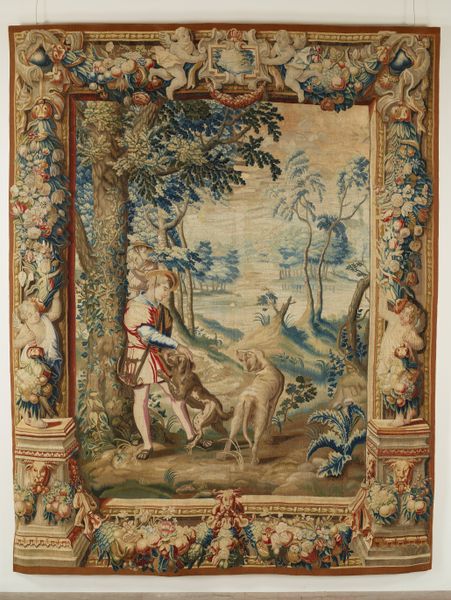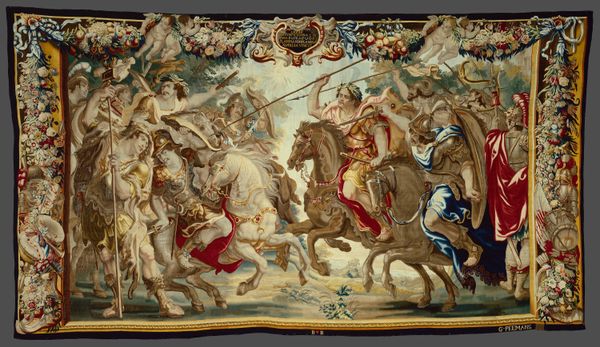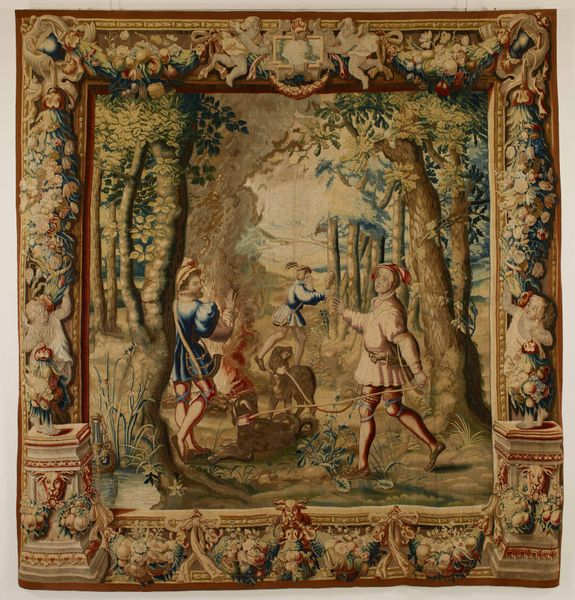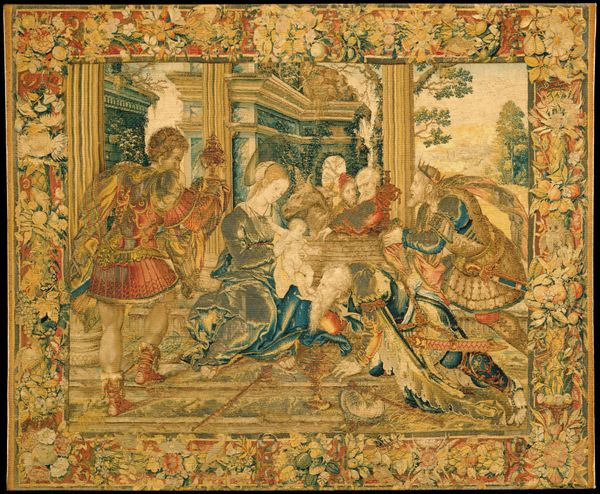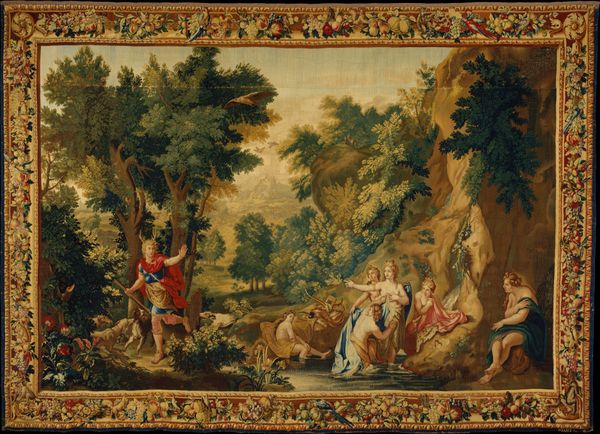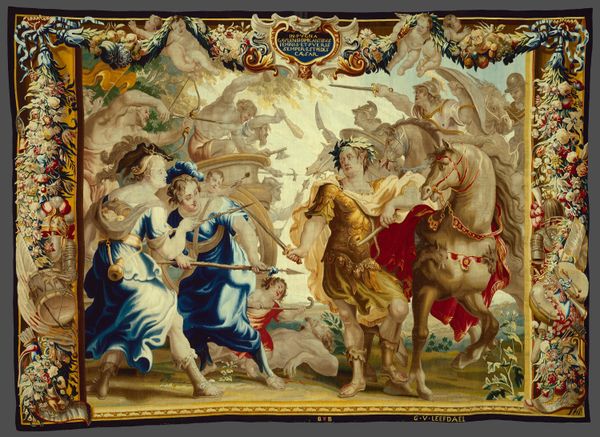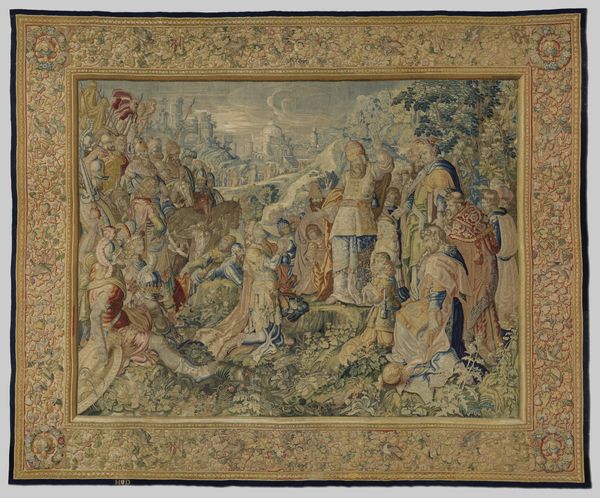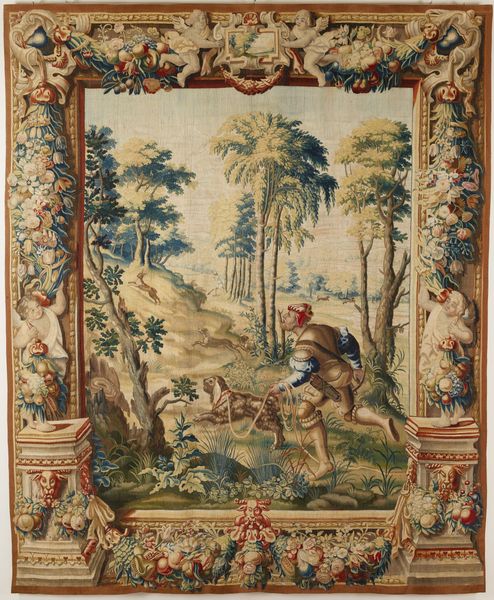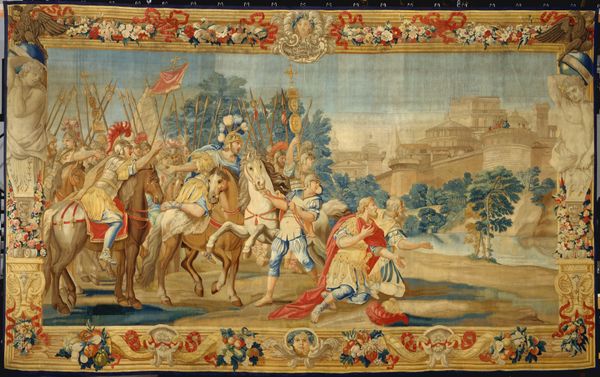
painting, oil-paint
#
narrative-art
#
baroque
#
painting
#
oil-paint
#
figuration
#
oil painting
#
watercolour illustration
#
history-painting
#
watercolor
Dimensions: height 365 cm, width 444 cm
Copyright: Rijks Museum: Open Domain
Pieter de Cracht's "The Death of a Hind Sacred to Artemis" is a large tapestry, woven with wool and silk threads. Its imagery is complex, but let's consider the labor behind it. The scene is rendered through countless tiny knots, each one tied by hand. This slow, painstaking process was the essence of tapestry production. Think of the weavers, working long hours in workshops, translating a painted design into textile form. Tapestries such as this were luxury items, commissioned by wealthy patrons to adorn their homes. They signified status and sophistication, but also represented a significant investment of labor. The materials themselves – fine wool and silk – were costly, and the weaving process demanded exceptional skill and time. By focusing on the making of this tapestry, we can appreciate the human effort embedded within its intricate design. It bridges the gap between fine art and craft.
Comments
No comments
Be the first to comment and join the conversation on the ultimate creative platform.
